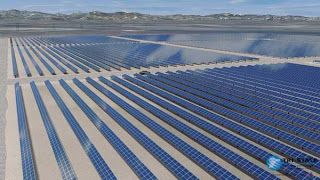A tale of two climate skeptics
 Freeman Dyson and James Lovelock are two of the world's most brilliant and respected scientists. In his youth Dyson mingled with the likes of Einstein and Oppenheimer pondering ways of unifying the micrscopic and macroscopic realms of physics. Lovelock along with Lynn Margulis developed the "Gaia Hypothesis" -- the theory that effectively transformed our world from one primarily based on physics to one based on life.
Freeman Dyson and James Lovelock are two of the world's most brilliant and respected scientists. In his youth Dyson mingled with the likes of Einstein and Oppenheimer pondering ways of unifying the micrscopic and macroscopic realms of physics. Lovelock along with Lynn Margulis developed the "Gaia Hypothesis" -- the theory that effectively transformed our world from one primarily based on physics to one based on life.Mr. Dyson is not convinced that climate change is real. I'm a believer, but I also find his arguments to be somewhat compelling. Read why he's skeptical in the New York Times Sunday Magazine cover story "The Civil Heretic".
Mr. Lovelock, on the other hand is a true believer in climate change. What he doesn't believe is that renewable energy technologies like solar and wind can effectively address the problem. He especially deplores wind farms for what he considers to be their visual blight. For him, nuclear energy is our only hope of avoiding a climatic catastrophe. (GW)
The new planning regime for wind farms is not a 'fascist' erosion of our freedoms; it is vital for the survival of our planet
By George Monbiot
March 31, 2009
Renewable power is drifting away on the wind like thistledown. The credit has gone; the price of fossil fuels has fallen. It is impossible to work in a country whose people treat wind farms like the black death. The investors have blown overseas or put their cash back into coal.
So James Lovelock's timing is, to say the least, eccentric. Just as several major companies reveal that they are packing their bags, the venerable father of Gaia theory - possessor of one of the world's greatest minds - announces in Sunday's Observer that "intemperate injunctions about green imperatives could make [environmentalism] as dangerous" as the ideology of the Axis powers. He told the Guardian that a new planning regime for wind farms is "an erosion of our freedom [that] draws near to what I see as fascism". His grounds? The energy secretary, Ed Miliband, had mused that it should be "socially unacceptable to be against wind turbines in your area - like not wearing your seatbelt or driving past a zebra crossing".
I have great respect for Professor Lovelock. He has done more to advance our understanding of the planet's response to climate change than any other living person. But he appears to be suffering from an acute case of bellamoids (an unexpected attack of irrationality first noted in David Bellamy). He is old enough to know what fascism looks like. It embraces a wide and contradictory set of movements, but its common feature is violence in the pursuit of political aims. If Professor Lovelock knows of people who have been killed as a result of their opposition to wind farms, he should tell us.
Fascism also has a reputation for being ruthlessly efficient in implementing its chosen schemes - building autobahns, mobilising panzer divisions, making the trains run on time. This is not a charge that could be laid at the door of Mr Miliband's department. His statement was in fact an expression of utter impotence: a hand-wringing entreaty to the public after all else has failed.
The government, as far as I can tell, has not yet formally renounced the target it set in 2000: that 10% of our electricity supply should come from renewables by 2010. So far it has managed 4.9%, and it has nine months in which to make up the difference. Its objective for 2020 is beginning to look almost as unrealistic. Despite the fact that the UK has richer ambient energy resources than any other country in Europe, the government managed to beat its target for renewable power down to 15% of total energy supply, rather than the 20% adopted across the EU. Even so, this means that by 2020 35% of our electricity must be produced by wind, hydro, wave, tidal, solar or biomass generators. The technology that could be most widely deployed is wind power, but investment is melting away faster than an Andean glacier.
Shell has pulled out completely. Centrica, E.ON and BT are reviewing their plans. Sun Microsystems has suspended its projects. The Spanish company Iberdrola is cutting its investment in the UK by 40%. Scores of smaller firms are going bust. Can you hear the jackboots yet?
Such is the state's failure that even Lord Browne, the former chief executive of BP who worshipped at the altar of the free market as fervently as any, now calls for "a new strategic direction and a new framework of rules, laid down by government". As it happens, the government is prepared to be ruthlessly interventionist in pursuit of other energy aims. To promote its policy of "maximising the UK's existing oil and gas reserves", it confiscates the licences of any company that fails to make full use of them. In 2007 it seized 32 blocks and parts of 40 others. It calls this approach "forcing unworked blocks back into play". But the state dares not be so dirigiste when dealing with renewables. It allows people of Professor Lovelock's persuasion to trample all over the industry.
I understand their concerns. I don't believe that wind farms should be built anywhere and everywhere. (Now that I live among them, however, I like them much more than I used to.) But the battle against wind power has grown out of all proportion to the threat it presents. The Campaign to Protect Rural England and its equivalent in Wales, the CPRW, appear to be obsessed; the CPRW should be renamed the Campaign to Publicly Rubbish Wind.
Local authorities are supposed to deal with planning applications within 16 weeks. They process 70% of other major developments - supermarkets, airport extensions, housing estates and the rest - in this period. They manage to work through just 5% of wind farms in the same amount of time: such is the public outcry.
You might imagine that the objectors are in the majority. They are not. In a survey by the Department for Business, 64% of respondents agreed that they would be happy to live within 5km of a wind development; 18% disagreed. But a very powerful middle-class constituency drives all before it, often using falsehoods to make its case. Even Professor Lovelock is not above using such tactics. In the Observer he used German figures to make his point about the UK: "the turbines are only 17% efficient". All the authoritative sources I have seen report a capacity factor for onshore wind in the UK of between 25% and 40%, and about 35% for offshore wind.
The objectors assert that the new planning act will force communities to accept wind farms. It's true that the infrastructure planning commission, rather than local authorities, will decide on projects bigger than 50 megawatts. But just 7% of the 7,000MW of onshore applications stuck in the planning process in England and Wales cross this threshold. Councils will have no discretion over new coal-burning power stations, roads and airports, but they will be able to settle the great majority of wind power proposals. There is plenty to object to in the pernicious new act, but it's hard to see why wind farms should be singled out.
The windbags have now driven most proposals offshore. But here, though the turbines can be bigger, the costs of establishment are much higher, not least because developers have to pay for their own connections to the national grid, which means laying down a long undersea cable. When you throw in the collapse of the carbon market, the reduction in the price of gas and coal, the shrivelling of credit lines and the devaluation of the pound, it's hardly surprising that investors have found something better to do.
As wind was the primary means by which the government was hoping to replace fossil fuels, the great pull-out appears to destroy any remaining likelihood that this country can meet its obligations under either the European directive or the UK's Climate Change Act. This is grim news for all but one of the earth's people. Professor Lovelock might not be around when it happens, but at least he will have the equivocal satisfaction of knowing that his prophecy - the total collapse of human society - is more likely to come true.











